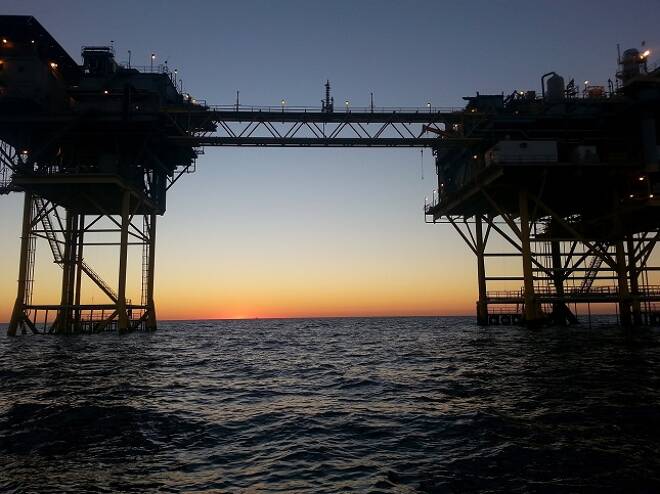Advertisement
Advertisement
Natural Gas Price Prediction – Prices Slip as Asian Natural Gas Benchmark Declines
By:
Slow LNG exports weigh on prices
Natural gas prices traded on the defensive on Friday. Prices have been in a grinding downtrend, and are holding just above support levels. It appears that LNG prices have weighed on US prices. Since September the Asian benchmark had dropped from more than $11 per mmbtu to $4.6 per mmbtu putting downward pressure on prices.
Technical analysis
Natural gas prices continued to grind lower, as little demand during the shoulder months is putting downward pressure on prices. The weather will be colder than normal in the mid-west, and the recent cyclone bomg has put a lot of snow in the Midwest. Support is seen near an upward sloping trend line that comes in at 2.65.
Momentum has turned negative as the MACD (moving average convergence divergence) index generated a crossover sell signal. This occurs as the MACD line (the 12-day moving average minus the 26-day moving average) crosses below the MACD signal line (the 9-day moving average of the MACD line). The MACD histogram is printing in the red with a downward sloping trajectory which points to lower prices and accelerating negative momentum.
Asian Natural Gas Tumbles
A story in the Wall Street Journal shined the light on Asian natural gas prices as the catlyast for the US natural gas decline. They say that a recent sharp decline in Asian and European LNG prices has generated downward pressure on US prices. The Japan Korea Marker, a widely used Asian benchmark, has fallen below $5 per million British thermal units in recent weeks, down from more than $11 before winter.
Asian prices have plunged in response to a warmer-than-expected winter in China and neighboring importers, which resulted in gas that was stockpiled in autumn being available for spring. At less than $5, the Asia price is right around the cost of US gas plus processing and shipping expenses. This takes the arbitrage out of the market, which has reduced the incentive to ship LNG. In tern, the high levels of production in the US has generated a pileup in inventories. Though processing and shipping costs can vary by exporter and destination, $2 per million BTUs is typical.
About the Author
David Beckerauthor
David Becker focuses his attention on various consulting and portfolio management activities at Fortuity LLC, where he currently provides oversight for a multimillion-dollar portfolio consisting of commodities, debt, equities, real estate, and more.
Did you find this article useful?
Latest news and analysis
Advertisement
